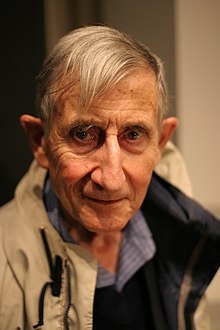
Dyson's transform is a fundamental technique in additive number theory. It was developed by Freeman Dyson as part of his proof of Mann's theorem, is used to prove such fundamental results of additive number theory as the Cauchy-Davenport theorem, and was used by Olivier Ramaré in his work on the Goldbach conjecture that proved that every even integer is the sum of at most 6 primes. The term Dyson's transform for this technique is used by Ramaré. Halberstam and Roth call it the τ-transformation.
This formulation of the transform is from Ramaré. Let A be a sequence of natural numbers, and x be any real number. Write A(x) for the number of elements of A which lie in . Suppose and are two sequences of natural numbers. We write A + B for the sumset, that is, the set of all elements a + b where a is in A and b is in B; and similarly A − B for the set of differences a − b. For any element e in A, Dyson's transform consists in forming the sequences and . The transformed sequences have the properties:
Other closely related transforms are sometimes referred to as Dyson transforms. This includes the transform defined by , , , for sets in a (not necessarily abelian) group. This transformation has the property that
- ,
It can be used to prove a generalisation of the Cauchy-Davenport theorem.
References
- ^ Nathanson, Melvyn B. (1996-08-22). Additive Number Theory: Inverse Problems and the Geometry of Sumsets. Springer Science & Business Media. ISBN 978-0-387-94655-9.
- ^ Halberstam, H.; Roth, K. F. (1983). Sequences (revised ed.). Berlin: Springer-Verlag. ISBN 978-0-387-90801-4.
- ^ O. Ramaré (1995). "On šnirel'man's constant". Annali della Scuola Normale Superiore di Pisa. Classe di Scienze. Serie IV. 22 (4): 645–706. Retrieved 2009-03-13.
- DeVos, Matt (2016). "On a Generalization of the Cauchy-Davenport Theorem". Integers. 16.
This number theory-related article is a stub. You can help Misplaced Pages by expanding it. |
 and
and  are two sequences of natural numbers. We write A + B for the
are two sequences of natural numbers. We write A + B for the  and
and  . The transformed sequences have the properties:
. The transformed sequences have the properties:




 ,
,  ,
,  ,
,  for
for  sets in a (not necessarily abelian) group. This transformation has the property that
sets in a (not necessarily abelian) group. This transformation has the property that

 ,
, 